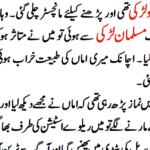1. Introduction to Tattoo Removal
The trend of tattooing has soared in recent years, with many people choosing to express their individuality through body art. However, as time goes on, preferences may change, or certain tattoos may no longer hold the same meaning. This shift in sentiment has led to an increased demand for tattoo removal services. Whether due to a change in lifestyle, personal relationships, or simply evolving tastes, understanding the tattoo removal process is essential for those looking to erase their inked past.
2. Understanding the Tattoo Removal Process
Tattoo removal is not a one-size-fits-all procedure. The effectiveness of removal largely depends on the method used, the tattoo’s characteristics, and the individual’s skin type. Several methods are available, each with varying levels of efficacy and safety.
3. Laser Tattoo Removal
How Laser Removal Works: The most common and effective method for tattoo removal is laser treatment. The laser targets the ink particles in the skin, breaking them down so that the body can naturally eliminate them.
Types of Lasers: Different lasers are used depending on the ink color. For example:


- Q-switched lasers: Effective for multiple colors, particularly darker inks.
- Pico lasers: Newer technology that delivers quicker pulses, potentially reducing treatment time and discomfort.
Benefits and Risks: Laser removal is less invasive than other methods and tends to leave less scarring. However, risks include pain during the procedure, the possibility of skin discoloration, and the potential for incomplete removal.
4. Other Tattoo Removal Methods
Apart from laser treatment, several other methods exist:
- Surgical Excision: This method involves cutting out the tattooed skin and stitching the remaining skin back together. It is best for small tattoos and can leave significant scarring.
- Dermabrasion: This method involves sanding down the skin’s top layers to remove the tattoo. It can be painful and may also lead to scarring.
- Chemical Peels: Certain acids can be applied to the skin to help fade tattoos. This method is generally less effective and may require multiple treatments.
5. Factors Affecting Tattoo Removal Costs
The cost of tattoo removal can vary significantly based on several factors:
- Size of the Tattoo: Larger tattoos generally require more sessions and, consequently, more expense.
- Ink Color: Some ink colors, especially bright or fluorescent hues, may require additional treatments for effective removal.
- Location on the Body: Areas with thicker skin, such as the back, may respond better to treatment, while areas with thinner skin may require more caution.
6. Average Cost of Tattoo Removal
On average, tattoo removal sessions can cost between $200 to $500 per session. Nationally, the total cost for complete removal can range from $1,500 to $10,000, depending on the factors previously mentioned.
7. Insurance Coverage for Tattoo Removal
In most cases, tattoo removal is considered cosmetic and is not covered by insurance. However, there may be exceptions for individuals seeking removal due to medical reasons or trauma. It’s essential to consult with your insurance provider to understand coverage options.
8. Pain Management During Tattoo Removal
Pain is often a concern for those considering tattoo removal. Most people report discomfort during the procedure, akin to a rubber band snapping against the skin. Common pain management options include:
- Topical anesthetics: Creams can be applied to numb the skin prior to treatment.
- Ice packs: Cooling the area can help reduce sensation.
- Oral pain relievers: Taking an over-the-counter pain reliever before the session may provide additional relief.
9. Aftercare for Tattoo Removal
Aftercare is crucial for ensuring optimal healing and reducing the risk of complications. Here are some essential aftercare tips:
- Keep the area clean: Gently wash the treated area with mild soap and water.
- Moisturize: Apply a gentle moisturizer to keep the skin hydrated.
- Avoid sun exposure: Protect the area from sunlight to prevent pigmentation changes.
10. Expected Results of Tattoo Removal
Results will vary based on several factors, including the tattoo’s age, ink colors, and the removal method used. It is essential to have realistic expectations, as complete removal may not always be possible, especially with vibrant colors. Scarring and skin texture changes can also occur.
11. The Link Between Tattoos and Skin Health
For some, tattoos can lead to skin issues, such as allergic reactions to inks or infections. In cases of infection or adverse reactions, removing the tattoo may be necessary to maintain skin health.
12. Introduction to Acne
Acne is a common skin condition that affects millions of people worldwide. It occurs when hair follicles become clogged with oil and dead skin cells, leading to breakouts. Understanding the causes of acne is crucial for effective treatment.
13. Natural Remedies for Acne
For individuals seeking to manage acne naturally, several remedies can help:
- Dietary Changes: Consuming a balanced diet rich in fruits, vegetables, and whole grains can improve skin health. Avoiding processed foods and sugars is also beneficial.
- Topical Treatments: Ingredients such as tea tree oil, honey, and aloe vera possess antibacterial properties and can soothe inflammation.
- Hydration: Drinking plenty of water keeps the skin hydrated and supports overall health.
14. Best Skincare Routine for Acne-Prone Skin
Building an effective skincare routine is essential for managing acne. Key steps include:
- Cleansing: Use a gentle cleanser twice daily to remove dirt and excess oil.
- Toning: Apply a toner with natural ingredients to balance skin pH and minimize pores.
- Moisturizing: Choose non-comedogenic moisturizers to keep the skin hydrated without clogging pores.
- Exfoliating: Regular exfoliation (1-2 times a week) helps remove dead skin cells and prevent clogged pores.
15. Frequently Asked Questions about Tattoo Removal and Acne
1. Is tattoo removal painful? Yes, many people report discomfort, but pain management options are available to help alleviate it.
2. How long does the tattoo removal process take? The process can take several sessions, typically spaced 6-8 weeks apart, depending on the tattoo’s size and colors.
3. Will my tattoo completely disappear? Results vary. Some tattoos may fade significantly, while others may not be entirely removed.
4. Can acne develop from getting a tattoo? Yes, some individuals may experience breakouts due to allergic reactions to the tattoo ink or irritation from the tattooing process.
5. What natural remedies are effective for acne? Dietary changes, tea tree oil, honey, and aloe vera are popular natural remedies for acne.
6. How can I prevent acne while undergoing tattoo removal? Maintain a proper skincare routine, stay hydrated, and avoid using harsh products on the skin during the removal







